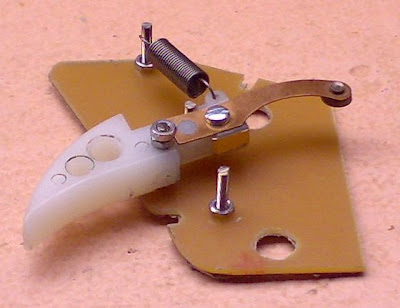
Hobbyists often dabble in all forms of modeling. Three of us aero modellers stayed with hard core Newcastle slot car racer Tim Murch and his wife Ann this past weekend.
In addition to knife making, slot car racing and aero modelling, Tim has a yen for off road rc racing. So much so that he has built this stunning off road track in his back yard for his 1/16 & 1/18 electric off road race cars.

In addition to knife making, slot car racing and aero modelling, Tim has a yen for off road rc racing. So much so that he has built this stunning off road track in his back yard for his 1/16 & 1/18 electric off road race cars.

The serious esses remind one of the old Newscastle slot car track and Tim and his buddies have a ball on the tight and fun track with their Associated and Anderson off road racers.
We also from time to time lead Tim astray to some mountain top slope flying at Volksrust, a midway mecca for the Highveld, Free State and Kwazulu Natal RC slope fliers:










































